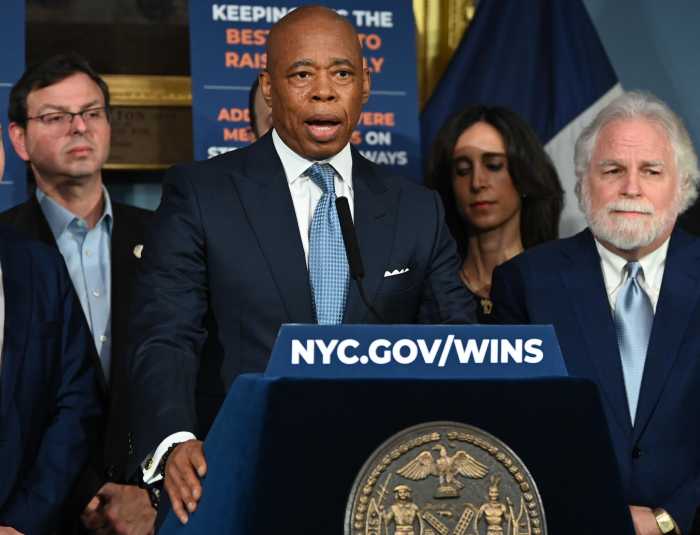
Manhattan’s M14 bus moves at a stately 4.3 mph — only slightly faster than walking.
To solve this problem, the city Department of Transportation (DOT) has proposed turning parts of 14th Street into a “busway”— that is, to limit parts of 14th Street to buses and other non-passenger vehicles. DOT analysts believe that this will speed up buses by as much as 30 percent during peak hours. If this experiment is successful, it could be tried on other busy streets like 34th Street.
Opponents of the busway correctly note that it will shift automobile traffic into residential streets like 12th and 13th streets. Litigation over this busway has focused on details of environmental law. But there is a broader principle at stake. Is it really such a good idea to protect our residential streets by letting our main streets be car-clogged? Or should major streets give more land for buses, even if it means that nearby streets get a few more cars per hour?
If we can make major streets car-free, everyone benefits in two ways. First, if buses move faster, more people will ride buses, thus reducing automobile traffic in the city. A car entering 14th Street won’t necessarily stay on major streets. Instead, it will weave in and out of the city until it reaches its destination, creating pollution and congestion wherever it goes. So in the long run, a car-free 14th Street benefits minor streets as well as 14th Street.
Second, cars on minor streets are less harmful than cars on major streets. Manhattan’s major streets tend to be wide enough that, when cars are not stuck at a traffic jam, they go 30 or 40 mph — speeds high enough to kill pedestrians. By contrast, minor streets like 12th typically only have a lane or two of traffic, which means that cars travel more slowly, which in turn means that drivers are less likely to cause life-threatening crashes.
I understand why residents of side streets would prefer to keep cars off their streets. But the public benefits of more bus riders and fewer fatal crashes are likely to outweigh the inconvenience.
Michael Lewyn is associate professor of law at the Touro Law Center.




























